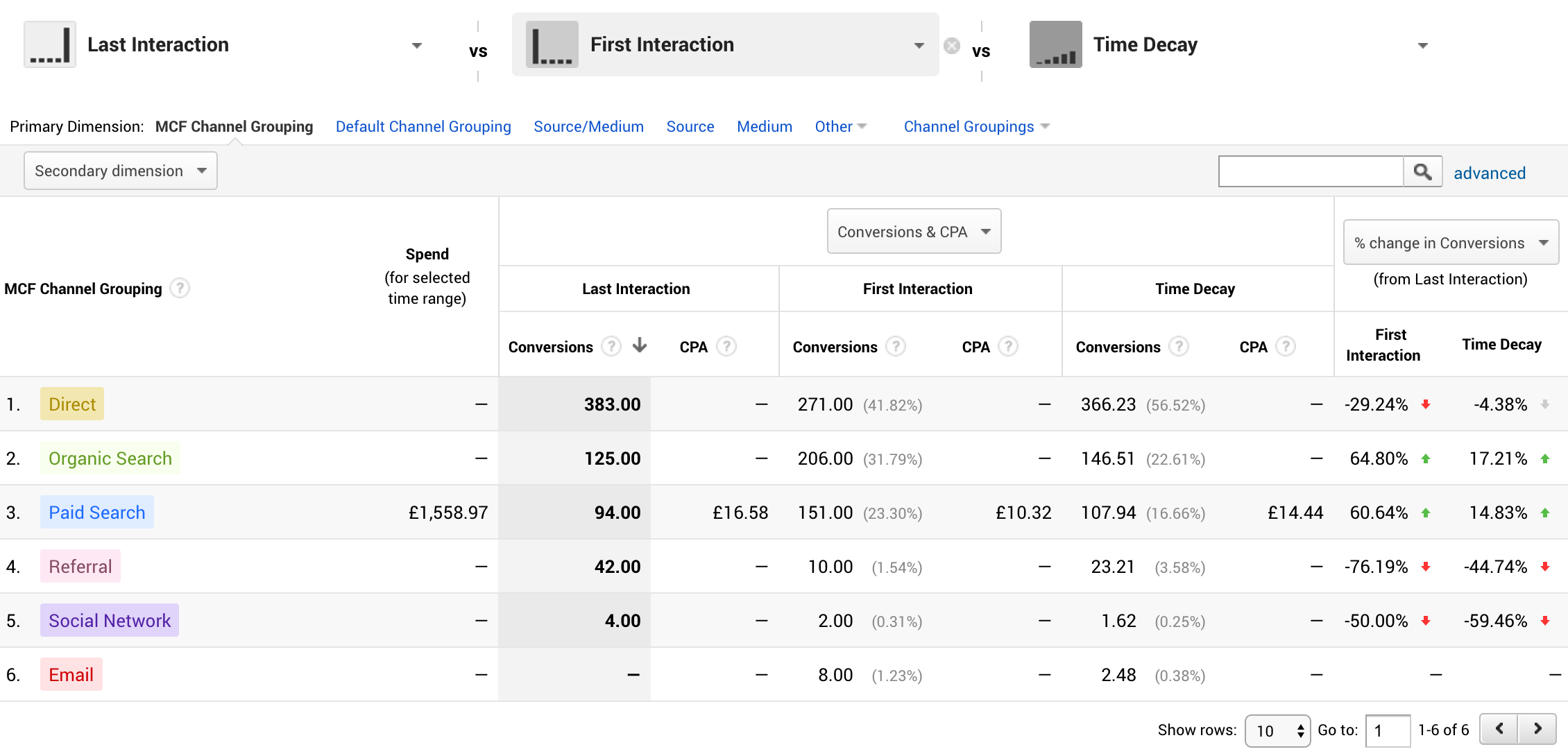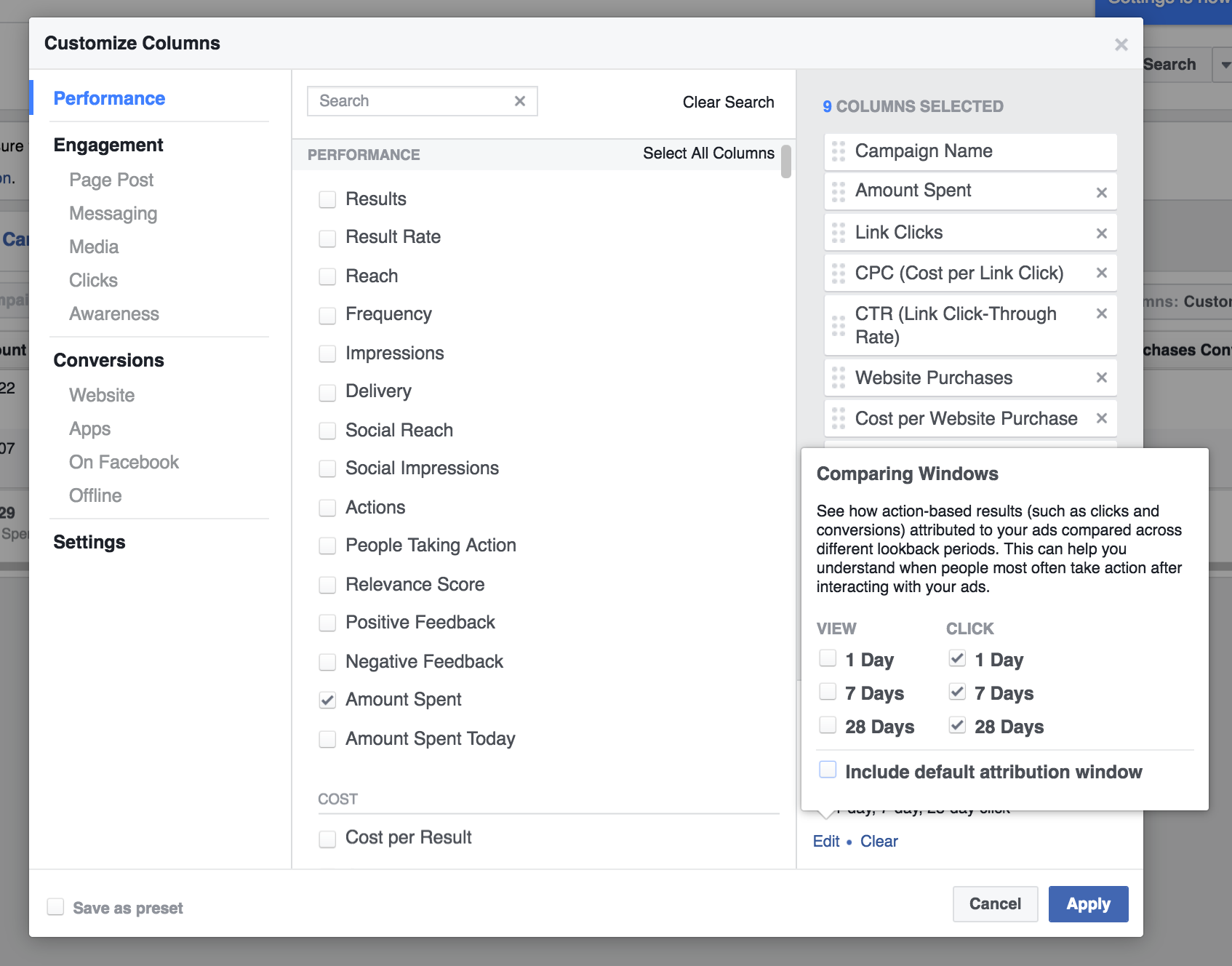Why Facebook’s conversion attribution model is lying to you, and what to do about it
Does your Facebook ad manager report different conversion data than Google Analytics? We dissect Facebook's Conversion Attribution and tell you how to fix it.
So you’re running some Facebook ads? Feeling like a whizz kid for installing your conversion events? Seeing those sales or leads roll in? Lose that smug look loser. I’ve got news for you…
What if I told you that everything you thought was real was actually a lie? You’re seeing those Facebook conversions ticking over, revenue rising, plus awesome engagement events firing, but something’s not quite right. Google Analytics isn’t reporting the same smashing sales that Facebook is, and your overall site revenue isn’t showing the kind of gains that you thought your extra sales were worth. Sound familiar?
This isn’t Total Recall, this is Facebook’s conversion attribution model.

What the hell is conversion attribution?
First a brief introduction…
When a user visits your website and completes a desired action such as a sale, contact form submission or newsletter sign up, chances are that you are tracking a conversion (or at least you should be). At their most basic, these goal completions will tell you how your website traffic performs (or converts) overall, but things don’t really get interesting until you start to slice up the data and see where those sales are coming from.
That’s where attribution comes into the equation. Once a conversion has taken place, your analytics tools should be able to accurately attribute that completed action to multiple segments such as traffic sources, device types, ads, campaigns, demographic groups, or geographical regions. All sounds good, except that deciding which segments are attributed the win is open to pretty broad interpretation.
Usually there are two different factors that define how a conversion is attributed:
1. The Attribution Model
This is the logic by which the conversion is attributed to a specific source, and looks at the various interactions the user has had with your site at different stages of the funnel.
2. The Attribution Window
The window is the time period in which a conversion is attributed.
Google Analytics takes a flexible approach to both the model and the window, allowing you to compare different approaches to attribution in order to accurately assess your traffic performance.

This table shows the comparison of 3 conversion models in Google Analytics using real data from an e-commerce site, with the window set at 30 days.
The first is the default Last Interaction model (attributes the conversion to the last click), the second First Interaction model (attributes the conversion to the first click), and finally the Time Decay model (attributes the conversion proportionally to every channel a user interacted with, with most weight given to the later interactions).
You can see from the data that comparing the first and last interactions there is a conversion increase of over 60% attributed to paid search traffic. Also note a decrease in direct and referral channel attribution to compensate for this. This gives us the really important insight that paid search channels are contributing more sales than we might have thought, and therefore provides a better ROI, potentially justifying greater investment in the channel.
Unfortunately, Facebook is less insightful and serves up a double whammy of bullshit to keep your advertising spend high.
Why does Facebook record more conversions than Google Analytics?
The way that Facebook attributes conversions is by default based not only on clicks but also on views of an ad or promoted post. The standard model is set to a 1-day view and 28-day click attribution.
In other words, the model attributes all conversions to Facebook that occurred either 24 hours after viewing, or within 28 days of clicking on or interacting with your sponsored content.
Unlike Google Analytics, there is no consideration for the other channels involved in the sale. As far as Facebook is concerned, if they touched base with the platform within the above constraints, it is fair game to claim the sale, and this has huge implications for your data.
Long story short, if your audience sees your ad in their newsfeed and completely ignores it, then for example does a google search and clicks on an organic link, then converts, Facebook will attribute that conversion to their ad. This is not a true reflection of a conversion generated from a Facebook ad as we all know.
For example, in this Google Analytics data for my paid search conversions from a 30 day period, we can see that only 4 conversions were attributed to my Facebook pay per click campaigns using the First Interaction model, and none at all with the other attribution types.

Facebook on the other hand, in the same time period is claiming 54 conversions within the same window! So how come there is this huge disparity?

The first reason why this reporting discrepancy is so gargantuan is because I am running remarketing campaigns which serve ads to previous website visitors.
This means that any user that visits the site from any channel, will be tracked with the Facebook pixel, and later served ads on Facebook. This combined with the 1-day view, 28-day click default attrib
ution model means that any user that made a purchase and had been on Facebook 24 hours prior to that (which let’s face it is almost everyone!) would have been recorded as a Facebook conversion just because they were served 1 impression from a retargeting ad.
For those that are not running remarketing, the effect will be somewhat less extreme, but still an issue. Remarketing campaigns just exaggerate the effect and are therefore useful to illustrate the difference.
Why do my Facebook conversions change over time?
The second issue is caused by the combination of Facebook’s gung-ho approach to attribution, and it’s default 28 day window.
The 28 day default window means that any conversion that takes place within 28 days of clicking on an ad will be attributed to Facebook, regardless of what other channels contributed to the sale as explained above.
This causes your conversion data to change over time. You can see this clearly by comparing my figures in the following table. I have pulled an identical report for the same time period (June 2017), but have extracted the data on different days (date report was created).

We can see that when I initially reported the conversions right at the end of the calendar month, only 8 conversions were recorded, but when the same data was pulled in August (after the 28 day conversion window is fully expired) Facebook reports 19 conversions.
To some extent this issue is true of any analytics tool, but when combined with the attribution model discrepancies the effect of the window is disproportionately amplified. This is not so much an issue with Facebook, but rather a factor that you should take into consideration for your reporting.
How can I get accurate conversion data from Facebook Ad Manager?
There are two solutions that you can use to get better conversion data from your Facebook campaigns. Firstly let’s look at what you can do with the Facebook Ad Manager itself.
In the Ad Manager you can click on the “Customize Columns” menu of your report, and in the bottom right is an inconspicuous section called “Attribution Window”.

By disabling the default attribution window and selecting whichever click window(s) you are interested in, you can compare the data free from view-through-conversion pollution between three different attribution windows.

In comparison to the 28-day click and 1-day view default model we can see that all of the click attribution models significantly impacts our conversion data, and also provides us insight on the length of the user journey with clear growth in the sales attributed as the window gets longer. The impact on the average cost per conversion is particularly significant.
While this approach doesn’t solve the problem entirely, it does at least allow us to approach our conversion data critically and better analyse our campaign performance using the on platform analytics tools that only Facebook offers us, such as comparing the various placement, device, and demographic breakdowns available on the platform.
How can I get accurate conversion data full stop?
The second, and perhaps more robust solution, is to use Google Analytics to report on your campaign performance. Unfortunately the two platforms see themselves as in competition with one another, and are notoriously poorly integrated.
In order to report on your individual Facebook campaign performance accurately in Google Analytics, you will have to tag your sponsored content with URL tracking parameters. Google’s UTM parameters allow you to tag any link with values for Source, Medium, Campaign and other Content values.

Recognise this? No I thought not.
If you already use Google Analytics, and send traffic from your social media platforms to your website, you should already be using UTM parameters to work out what is happening to users after landing on your site. That said, I’m well aware that 90% of people reading this article will have never smelt a UTM parameter’s fart before, let alone added one to that much neglected field in Ad Manager.
If you’re intimidated by that gnarly looking mess of equals signs and underscores, then you can use the Hello Social UTM Parameter Tool spreadsheet to create your own code. Just make a copy of the spreadsheet and you can use it for your Facebook campaigns.
Too kind, I know.
To wrap up…
While conversion attribution might not be the most riveting of topics for some, it’s something that all marketers should be aware of when looking at your traffic mix and channel performance.
It’s not that Facebook’s data is worthless. There’s still plenty of great insight that can be extracted from the platforms great analytics features, and the way that its reporting differs from Google Analytics can actually be a strength.
Facebook gives great macro indicators of engagement, which GA doesn’t report on in the same way. It also lets you line up growth in your audience with actions taken on your website in a way that many other social platforms just don’t make possible.
The moral of the story is to use both tools, but to understand how they differ from one another, and use each to track KPI’s independently. Even Google Analytics’ conversion attribution models are fundamentally flawed.
All your different reports should ultimately refer back to the baseline that is your P&L document, which takes data directly from your checkout or shop system and reports on the actual revenue in your bank account. Another reason why you should share these revenue reports with your marketing department, but that’s a whole other story.
Are you confused by conversion attribution, social media analytics or computers in general? Contact the Hello Social team and we’ll make all your problems go away for a monthly fee.







